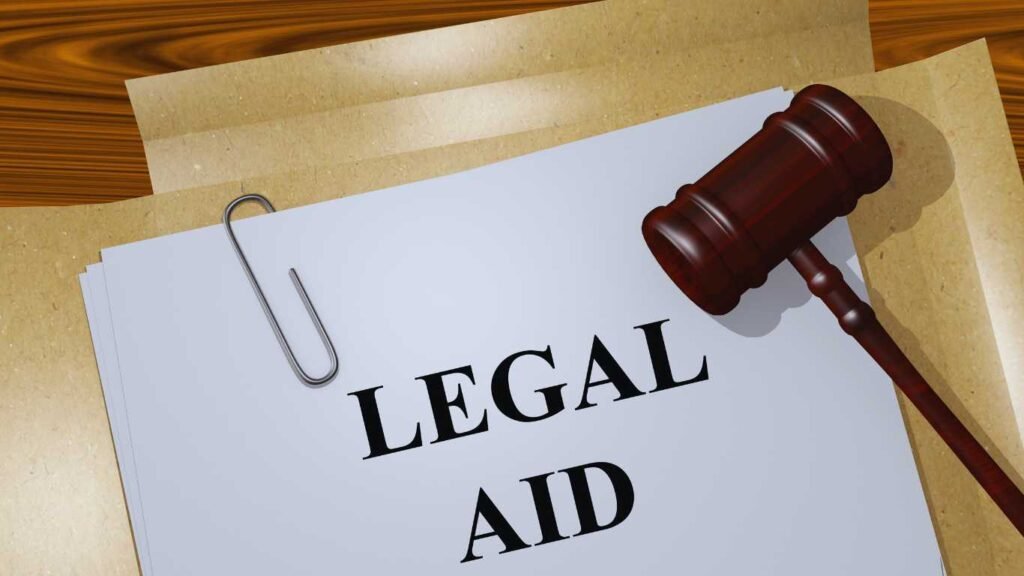Average speed camera devices on the A9:

Sarah John's
Legal Writer
The use of average speed camera (ASC) devices has been a critical element of road safety measures in Scotland. The longest road in Scotland, the A9, also uses average speed cameras to increase road safety and minimise the chances of road accidents. Let’s take a closer look at how average speed cameras work and what impact they can have on car accident claims in Scotland.
Table of Contents

Get In Touch With Your Local Office:
With local knowledge and a national network of experts, we have the experience you can count on.
What is the Average speed of camera devices on the A9?
The average speed cameras on the A9 do not have their own average speed. Instead, they measure the speed of vehicles passing by. These cameras monitor the speed of cars, trucks, and motorcycles to ensure they are not travelling too quickly.
Here is how they work:
A9 average speed cameras measure the speed at which a vehicle travels from one point on the road to another. They do not care about your speed when passing in front of a single camera. What they care about is your average speed between two cameras.
The speed limit on A9 Scotland ranges from 30 to 70 mph; the cameras help enforce these rules. If you go faster than the speed limit between two cameras, you’ve gone too fast on average, which could result in a speeding ticket.
What are the speed limits on the A9 road?
The most dangerous road in Scotland, the A9, has different speed limits in various sections. It’s important to know these limits because they are strictly enforced, especially with average speed cameras and mobile speed cameras. Here are the general A9 Speed Limit 2023:
Motorway Sections:
Where the A9 is dual carriageway, the limit for cars and motorbikes is usually 70 mph unless signs show otherwise. The limit is usually 60 mph for buses, coaches, and goods vehicles that weigh more than 7.5 tonnes. For goods vehicles that weigh less than 7.5 tonnes, the limit is usually 70 mph.
Dual Carriageways:
The speed limit on the parts of the A9 that are dual carriageway sections is usually 70 mph for cars and motorbikes, 60 mph for vehicles up to 2 tonnes, and 50 mph for buses, coaches, and goods vehicles over 7.5 tonnes.
Single-lane roads:
The speed limit on single-carriageway sections of the A9 is usually 60 mph for cars and motorcycles, 50 mph for vans based on vehicles that weigh up to 2 tonnes, and 40 mph for buses, coaches, and goods trucks that weigh more than 7.5 tonnes.
Rural places:
The speed limit for cars and motorcycles can be up to 60 mph in most rural areas, where roads are often single or dual carriageways. It can be up to 50 mph for vehicles that weigh up to 2 tons, and it’s usually up to 40 mph for buses, coaches, and goods vehicles that weigh more than 7.5 tons. Again, always read the signs because the speed limit can differ on different road sections.
Urban Areas:
The speed limit is usually lower in cities with more pedestrians and cars. The standard speed limit is 30 mph, but it could be lowered to 20 mph in some residential areas or near schools.
Built-up Areas:
Built-up areas usually have a 30 mph speed limit. This often applies where there are regular street lights placed no more than 200 yards apart. Always check for signs, as some built-up zones may have a lower limit, such as 20 mph near schools or residential streets.
Are average speed camera devices legally authorised for use on the A9 in Scotland?
Yes, the average speed camera devices are legal to use on the A9 in Scotland.
Scotland’s government and the police allow the use of these cameras. They want to ensure that everyone on the roads is safe, and these cameras play a significant role in achieving that goal.
It’s like having a police officer with a speed gun all day and night. Not only in one spot but all along the road. When real police officers can’t be there, these cameras act as the eyes of the law.
The law permits using these cameras because speeding is a major cause of car accidents. Driving too fast can cause accidents, which can result in serious injuries and even death. Nobody would want that; these cameras are essential because they help slow drivers down and decrease the number of speeding accidents.
How do the A9 speed cameras work?
The purpose of speed cameras on the A9 in Scotland is to encourage safe driving and avoid potentially fatal accidents. They use advanced technology to monitor how fast cars are going and ensure that everyone follows the traffic rules; this is how they work:
Types of Cameras:
There are different kinds of speed cameras, but average speed cameras are the most common on the A9. These cameras figure out the average speed of a vehicle over a certain distance rather than at a single point.
Measuring Speed:
The average speed camera systems on the A9 use Automatic Number Plate Recognition (ANPR) technology. This means that they take pictures of licence plates at different places along the road. Each camera keeps track of when a car drives by. The system then determines the average speed based on how long the car takes to get from one place to another.
Images and Data Storage:
If a car is going over the speed limit, the camera system will take more pictures and data, like the date, time, position, and speed of the car. This information is necessary to issue any fines or penalties.
Penalties:
If a car is caught going over the speed limit, its registered owner may get a Notice of Intended Prosecution (NIP) in the mail. This could lead to penalties like fines, points on the driver’s licence, or even a court summons if the speeding offences are serious.
Speed cameras on the A9 remind cars to stay within the speed limit. The goal isn’t to catch reckless drivers but to encourage good driver behaviour to make the roads safer for everyone.
How are A9 average speed cameras installed and operated legally?
Installing and using average speed cameras on the A9 or any other road in Scotland requires several steps to ensure they are used legally and safely. Here’s how things usually work:
Need Identification:
The first step is to figure out why there is a need for speed cameras. This generally happens when there are a lot of accidents caused by speeding on a particular section of the road. Authorities might also consider factors like the safety of pedestrians, road work, or how close the area is to schools or other vulnerable places.
Approval:
Once the need is identified, the authorities ask the relevant departments for permission. These typically include local councils and Transport Scotland, the national transport agency. The approval process ensures that the decision to install cameras is legal and in the best public interest and public safety.
Installation:
Once the camera system gets the go-ahead, technicians install it in specific places. The average speed cameras on the A9 are pairs of cameras set up at different points along the road. These cameras are set up so that they can take pictures of all cars going through, no matter which lane they are in.
Testing:
After the system is set up, it is tested carefully to ensure it works correctly and efficiently. This includes ensuring the cameras can take clear pictures of license plates and accurately measure the average speed.
Operation:
Once testing is complete, the camera system goes into action. The cameras are supervised and maintained by Safety Camera Partnerships, which oversees speed and red-light enforcement cameras throughout Scotland.
Data Processing:
If a car is found to be going too fast, the camera data is sent to a centre for processing. Here, the data is checked, and if a speeding violation is confirmed, a Notice of Intended Prosecution (NIP) is sent to the car’s registered owner.
Legal Compliance:
All parts of the installation and use of the cameras are in line with Scotland law. This includes data protection rules that keep drivers’ information private.
DEDICATED CLAIMS ADVISORS
Our dedicated claims advisors are always available to offer free legal advice.
100% NO WIN NO FEE CLAIMS
All our claims are processed on a No Win No Fee basis; you pay nothing if you lose.

MILLIONS SECURED IN DAMAGES
To date, we have secured millions in damages.
THOUSANDS OF SATISFIED CLIENTS
To date, we have helped thousands of clients recover compensation and continue to do so.
What are the Scottish law penalties for A9 average speed camera violators?
If average speed cameras Scotland on the A9 in Scotland find a driver over the speed limit, they can get a ticket. How much the driver exceeded the speed limit can affect how much of a fine they get. Usually, these things happen:
Notice of Intended Prosecution (NIP):
If a car is caught speeding, the owner will get a Notice of Intended Prosecution (NIP) in the mail. The NIP will state the date, time, and location of the offence, and the speed of the vehicle. The NIP will also ask for the name and address of the driver who was at the wheel at the time of the offence.
The vehicle’s registered owner has 28 days to respond to the NIP. If they do not respond or fail to provide the driver’s name, the police may issue a summons to court.
Fixed Penalty Notice (FPN):
The driver may get a Fixed Penalty Notice (FPN) if the offence is not too bad. This usually leads to a fine of £100 and three points on the driver’s license.
Court Summons:
If the crime is more serious, like driving significantly faster than the a9 average speed cameras speed limit, the driver may be called to court. When this happens, the punishments can be harsher. The driver could get a bigger fine (up to £1,000 or £2,500), between 3 and 6 points on their license, or even lose their license.
New Drivers:
A new driver’s license will be taken away if they get six or more penalty points within two years of passing their driving test. This includes points they got before they passed the test.
Can I appeal an A9 average speed camera speeding fine?
Yes, you can question or appeal a speeding ticket you got from an average speed camera A9 in Scotland. However, it’s important to know that this process can be hard and that you might not succeed. Here is a simple way to do this:
Review the Notice:
Read the Notice of Intended Prosecution (NIP) or Fixed Penalty Notice (FPN) carefully. Check the details to make sure there are no mistakes, such as the wrong date, time, place, or information about the vehicle.
Grounds for Appeal:
You can only make an appeal if you think the fine was issued wrongly. This could be because you weren’t speeding, because you weren’t driving at the time, or because someone stole your car. You can’t just make an appeal because you don’t want to pay the fine or avoid points on your licence.
Advice from a lawyer:
If you decide to submit an appeal, you should talk to a lawyer first before making an appeal. A lawyer can help you through the process of appealing and help you make your case.
Challenge the Notice:
You can challenge the notice by writing back to the address on the NIP or FPN and stating why you think the fine was given in error. Make sure you do this within the deadline on the letter, which is usually 28 days.
Court Hearing:
If the officials don’t accept your appeal, the case may go to court. You or your lawyer will have the chance to make your case in court. The court will then decide whether to uphold or dismiss the fine.
Possible Outcomes:
If your challenge is successful, the fine and penalty points will go away. However, if your appeal doesn’t work, you might have to pay the original fine and possible court fees; you might also get points on your licence.
Remember that following the speed limit is the best way to avoid getting a ticket for speeding. They are there to make sure that everyone on the road stays safe.

Can’t Work Due To Illness Or Injury?
Use our free online claim check tool and find out in minutes if you have a claim.
How many people have been caught speeding on the A9?
The A9 road in Scotland, from Inverness to Dunblane, is about 136 miles long and has been a source of concern because of major accidents. To fix this, average speed cameras were installed on the road in 2014. However, even with these measures, not all drivers follow the speed rules.
According to figures from Police Scotland’s Safety Camera Unit, mobile speed cameras caught 2,958 drivers speeding on the A9 between January 1, 2019 and mid-December 2022. These mobile units are deployed in regions with the greatest need for road safety improvement.
Out of all the drivers who were caught speeding, 2,727 were caught on the A9 between Perth and Inverness. Even though there are average speed cameras, these numbers show that many drivers still don’t follow the speed rules.
Many people believe that these numbers show that the average speed cameras, which were put in place to make drivers follow the rules and make the roads safer, are not having the effect that was hoped for. However, it’s important to keep in mind that the goal of these cameras isn’t just to catch speeding drivers. Instead, they’re meant to get all drivers to follow the speed rules and make the roads safer.
So, even though the number of violators may seem high, it doesn’t mean that the average speed cameras are ineffective. Instead, we should consider what other possible steps we can take to ensure the A9 and other roads are as safe as possible for every road user.
Average Speed Cameras:
Average speed cameras work by calculating a vehicle’s average speed over a certain distance. They use Automatic Number Plate Recognition (ANPR) technology to capture images of a vehicle’s number plate at multiple points along a stretch of road. By recording the time a car passes each camera, the system can calculate the vehicle’s average speed over the distance between the two camera locations.
If a vehicle’s average speed between the two points exceeds the speed limit for that section of the road, the system will automatically record the violation. It will also record additional data, including the date, time, location and speed. This data is then used to issue any necessary fines or penalties.
Mobile Speed Cameras:
These cameras are usually operated by enforcement officers inside specially marked vehicles. These vehicles can be parked at the side of the road, often where speeding is a problem or where there has been a high number of road traffic accidents.
Mobile speed cameras use radar or laser technology to measure the speed of passing vehicles. If a vehicle is detected as going over the speed limit, the camera takes a picture of it, including its number plate. This picture provides the evidence needed to issue a Notice of Intended Prosecution (NIP) to the vehicle’s registered owner.
The main advantage of mobile speed cameras is their flexibility. They can be used in different locations at different times, which makes it harder for drivers to predict where they might be. This unpredictability helps to encourage drivers to stick to the speed limits at all times, not just when they know a fixed camera is present.
It’s important to note that the aim of using both mobile speed cameras and average speed cameras is to make roads safer. They are there to discourage speeding and reduce accidents rather than to catch those who break the rules. By sticking to the speed limits, drivers can help make the A9 and other roads in Scotland safer.
How can average speed cameras be helpful in your personal injury claim?
If you’ve been involved in a road accident in Scotland, average speed cameras could be helpful in your claim for compensation. The information collected by these cameras could be used as evidence to support your case.
For example, let’s say you’ve had an accident on the A9, and you believe the other driver was speeding, contributing to the accident. The data from the average speed cameras could be used to show that the other driver travelled at an excessive speed on the road where the accident happened.
This is where Personal Injury Solicitors Scotland can assist you. A Personal injury lawyer is a professional; they have the necessary skills and expertise required to handle personal injury claims (such as for head injuries or claims for lower back pain). They can help gather the necessary evidence, including data from average speed cameras, to support your claim.
Moreover, many of these solicitors operate on a “No Win, No Fee” basis. This means that No Win No Fee Solicitors Scotland will only charge you a fee if they win the case for you. Knowing that they will work hard to get the best possible outcome for your case can give you peace of mind.
FAQs
How do average speed cameras work in Scotland?
Average speed cameras use number plate recognition to note your car at one camera, then again at the next. The system works out the time you took to travel the set distance and calculates your average speed. If that average is over the limit for that stretch of the road, you can be fined.
What is the average speed camera tolerance Scotland, and how much over the limit can you drive before getting fined?
There is no legal tolerance that lets you drive over the limit in Scotland. Police may use a small margin to allow for measurement error, but this is not a right and can change. The safest choice is to stay at or below the posted limit at all times.
Average speed cameras how do they work at night or in poor weather conditions on Scottish roads?
They use infrared light and high-quality lenses, which let them read number plates clearly at night or when visibility is poor. Reflective plates and clear road signs also make it easier for the cameras and drivers to see in rain, fog, or snow. When there are temporary speed limits because of bad weather or roadworks, the cameras automatically check and enforce those limits as well.
Easy Ways To Get In Touch
We are here to help. Give us a call, request a call back or use our free claim check tool to get in touch with our friendly legal team. With local knowledge and a national network of experts, we have the experience you can count on.





